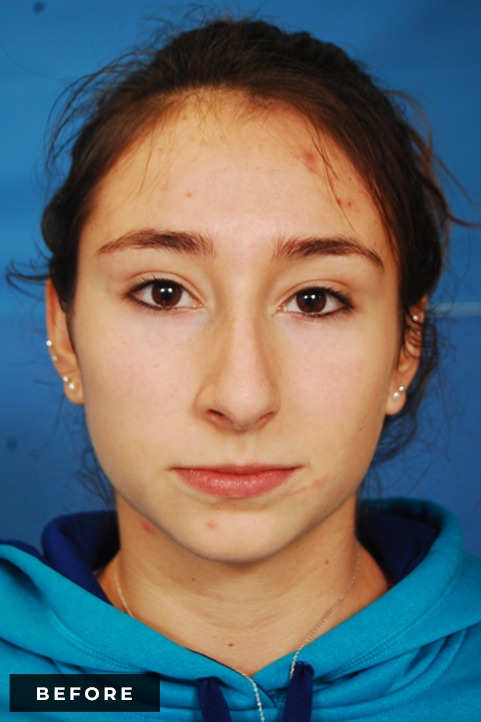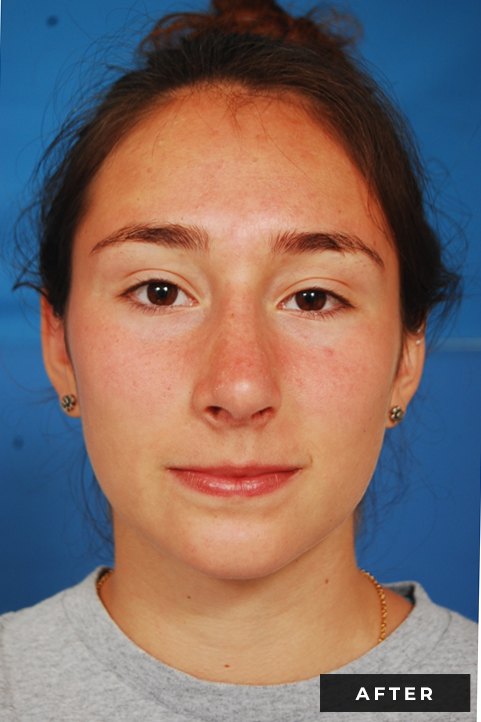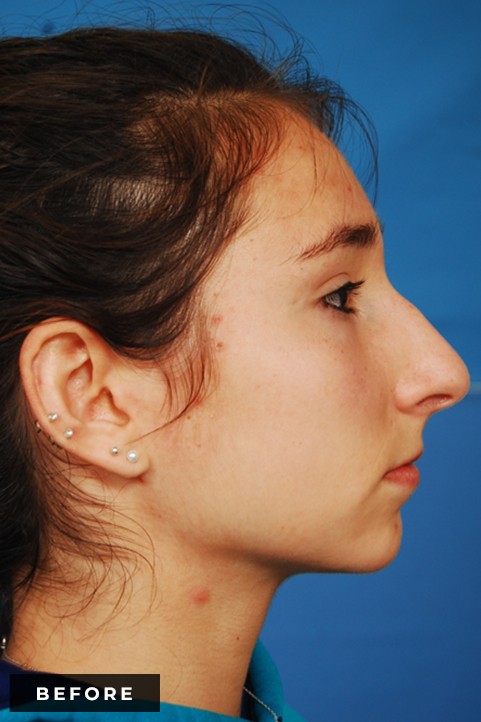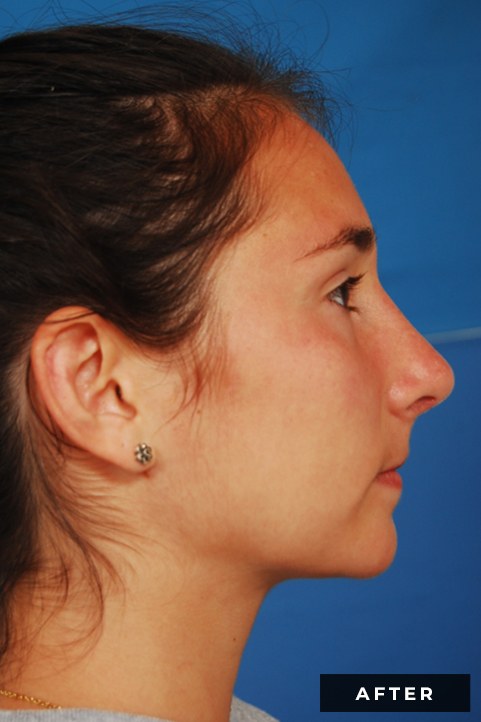3800 Reservoir Rd, 1st Floor Gorman
Washington, DC 20007
6862 Elm St, Suite 800B
McLean, VA 22101
Genioplasty, or chin augmentation surgery, can be performed to alter the shape and/or projection of your chin.
This evaluation involves the assessment of your facial anatomy and desires for improvement. Dr. Reilly will work with you to create a plan that aligns your goals with potential surgical treatments based on your anatomy.
Generally, this type of surgery is done to increase the projection of the chin in order to improve harmony with the rest of the face.
The technique involves first determining the desired degree of chin augmentation. Once a decision has been made about the optimal implant size, a small incision is made either within the mouth or below the chin, and the implant is inserted and secured.
Most patients take one week off work, followed by another week of reduced activity. There will be bruising and swelling for 7-10 days. After 2 weeks, you may resume full activity.




Background
Mentoplasty, or chin augmentation, is a procedure that may achieve well-balanced facial features. A “weak” chin may cause the nose to appear more prominent or the other facial features to be out of harmony.
Evaluation
This evaluation involves the assessment of your facial anatomy and desires for improvement. Dr. Reilly will work with you to create a plan that aligns your goals with potential surgical treatments based on your anatomy.
In the vast majority of patients, the desired aesthetic result is readily achieved. However, the possible complications of chin implant surgery include but are not limited to the following:
Infection, bleeding, swelling, scarring, numbness, skin discoloration, asymmetry, displeasure with the cosmetic outcome, and allergic or other negative reactions to one or more of the medications or substances used in the operation.
Dr. Reilly can use two approaches to the chin augmentation procedure; he may recommend an incision in the natural crease of your chin, or inside your mouth where the lower lip and gums meet.
To increase the size of your chin, the skin will gently be stretched while the implant is inserted. The implant feels like tissue found naturally in your body, and they come in various sizes and shapes. Dr. Reilly will discuss with you your specific desires to determine the best shape for your implant. Fine sutures are used to close the incision site. No visible scarring occurs with the approach inside your mouth. If the incision is made under your chin, the scar is typically invisible, as Dr. Reilly uses the natural geography of your face to best disguise the scar. Typically this type of surgery averages 1-2 hours.
Arrange for someone to stay with you for the first 24 hours.
Go to bed and rest, lying on your back, with your head elevated with 2-3 pillows. You should be lying at a 45 degree angle.
You may be up and around and able to go to the bathroom. You will be able to eat a light meal with assistance.
Take medication only as directed.
Some swelling, bruising and tightness of the bandages are a normal occurrence.
Place ice packs on the sides of the face for the first 48 hours (on for 20 minutes, then off for 20 minutes).
Keep the incisions moist with petroleum-based ointment. Cover any draining area with bandages. If they loosen, secure them with more tape.
You may be up and around as tolerated but expect to tire more quickly than usual.
Keep activity and meals light, avoiding meals that require significant chewing.
On the 3rd day, you can remove all bandages and gently shampoo your hair in the shower with baby shampoo. It is advised to let your hair air-dry, but you may use a cool setting if you need to use a hair dryer.
You will come into the office for a post-operative check-up and suture removal.
No alcohol for the first 7 days after surgery, which can increase bruising and swelling.
Your swelling and bruising will gradually fade over this time period, but it may persist for up to 3 weeks. You will come in for another post-operative check-up 4-6 weeks after surgery.
You may apply makeup to conceal bruising, but be sure to avoid anywhere near the incision lines for at least 10 days after surgery.
1. Rest and good nutrition are important healing factors, especially during the first 6 weeks.
2. Numbness, tingling, hardness, tightness, and bumpiness of the neck tissues are common occurrences. If any of these things do occur, they will gradually subside over several months.
Message Sent!

Dr. Michael Reilly is double board-certified by the American Board of Otolaryngology--Head & Neck Surgery and The American Board of Facial Plastic & Reconstructive Surgery. He specializes in facial plastic surgery and Rhinoplasty.
Follow up appointments:
Medical emergency:
Clinical questions: